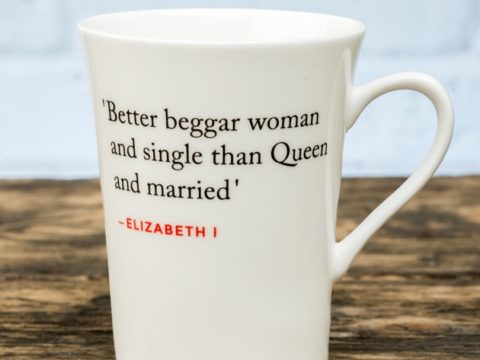Mary, Queen of France: Life Story
Chapter 2 : The Charming Princess
Like all kings’ daughters, Mary was on the marriage market soon after her birth. An early candidate for her hand was Maximilian, son of Ludovico Sforza, Duke of Milan. Ludovico wanted Henry VII’s support in preserving his duchy from the predatory French king, Louis XII, who claimed it as his own. Henry, however, was at peace with France, and intended to remain so. There was talk of a match with Archduke Charles, son of Philip, Duke of Burgundy and Juana, heiress to Castile, but it came to nothing when the Queen of France, Anne of Brittany, arranged for him to marry her daughter and heir to her duchy, Claude.
In 1505, the idea was resurrected, although Charles was still betrothed to Claude. Henry proposed that Mary might marry Charles, whilst he would marry the widowed Archduchess Marguerite of Austria – daughter of Maximilian, and aunt of the Archduke Charles. She was also the former sister-in-law of Katharine of Aragon. At this stage, it was just talk, but the following year, circumstances changed, making such a betrothal for Mary a real possibility.
In January 1506, the Archduke’s parents, Philip and Juana, set sail from Burgundy to claim Juana’s kingdom of Castile, which she had inherited two years before. Whilst they were in the English Channel, a mighty storm arose, and they were obliged to take shelter in the English port of Melcombe Regis in Dorset.
Nothing could have served Henry VII’s political purposes better. He was displeased with the Burgundians for harbouring Edmund de la Pole, Earl of Suffolk, the ‘White Rose’, who had some claim to the English crown. Philip requested that he and his party might be swiftly refitted with a new ship and allowed to proceed immediately, but Henry had other ideas. Philip was deluged with ceremonial, taken to Winchester, then Windsor, surrounded by Henry and his son, the Duke of York, and as many nobles as could be found at short notice.
Henry gilded the cage – Philip was wined and dined lavishly. Unable to show anger at the king, Philip was pointedly rude to his sister-in-law, Katharine of Aragon, refusing to dance with her, despite her repeated requests. The awkwardness was smoothed over by Mary – now eleven, she was already displaying the beauty and charisma that would be remarked on for the rest of her life. She danced, she played the clavichord and the lute, and was ‘of all folks there greatly praised.’
Philip was obliged to sign several treaties to England’s advantage. He was forced to bring Queen Juana to Windsor to ratify them, although he was doing everything he could to undermine his wife so that he could take control of her kingdom. Juana was greeted with the ceremony appropriate to a reigning queen, and Mary was part of the welcoming party.
Henry, unwilling to trust Philip’s word, detained the restive duke until he had received word that Suffolk had been handed over to his own men. He had agreed that Suffolk would not be executed, and kept his word. The earl was merely confined to the Tower of London. During this period of restraint, Philip was accompanied on tourist visits around London by Prince Henry and Princess Mary, including a call on Lady Margaret Beaufort.
Before Philip and Juana could depart, there was a final grand joust at Richmond, that of Lady Winter and Dame February, where Philip and his dazzling entourage impressed Prince Henry with their chivalric glory. Prince Henry was not permitted to joust himself – his life was too precious. Again, Charles Brandon was one of the English team.
Jousting became all the rage with the young Prince Henry and his friends. In May 1506, Prince Henry organised another event at Greenwich, over which Mary presided as the lady of honour. The tournament was introduced by Lady May, and her companion, Dame Summer, who wished to outdo Lady Winter. Lady May requested Mary to ‘license her (Lady May’s) servants to defend her honour (Mary’s) in ‘exercise of chivalry’. Mary would have granted her gracious permission, and then given the prizes to the victors.
In 1506, Philip of Burgundy died. His son, Archduke Charles, was now Duke of Burgundy. As he was a minor, the regency fell to his grandfather, Emperor Maximilian, who, chronically short of money, was keen to continue negotiations with the wealthy Henry VII. The proposed marriage between Charles and Mary was agreed, and a formal treaty confirmed in early 1507.
To celebrate, more tournaments were held, this time at Prince Henry’s house at Kennington. As was usual, the tournament had been announced across Europe to bring the best jousters to England. Mary was the Lady Sovereign of the joust, dressed in green robes, decorated with spring flowers, and attended by a bevy of green-clothed ladies and servants, she was admired by all, reported as ‘[having] such beauty it would a heart constrain to serve her’.
Unfortunately, rather than being the usual spectacle of a dangerous sport, kept within bounds, the joust descended into scenes of excessive violence, with many of the participants badly hurt.
Aged thirteen, Mary was now legally marriageable, and her attractions were very manifest to one of Henry VII’s resident poets – Stephen Hawes. Hawes wrote the usual allegorical courtly romances beloved of the late mediaeval period, most famously the ‘Pastimes of Pleasure’. He appears to have been captivated by Mary and ‘sigh[ed] full oft’ in her presence.
Mary, Queen of France
Family Tree


